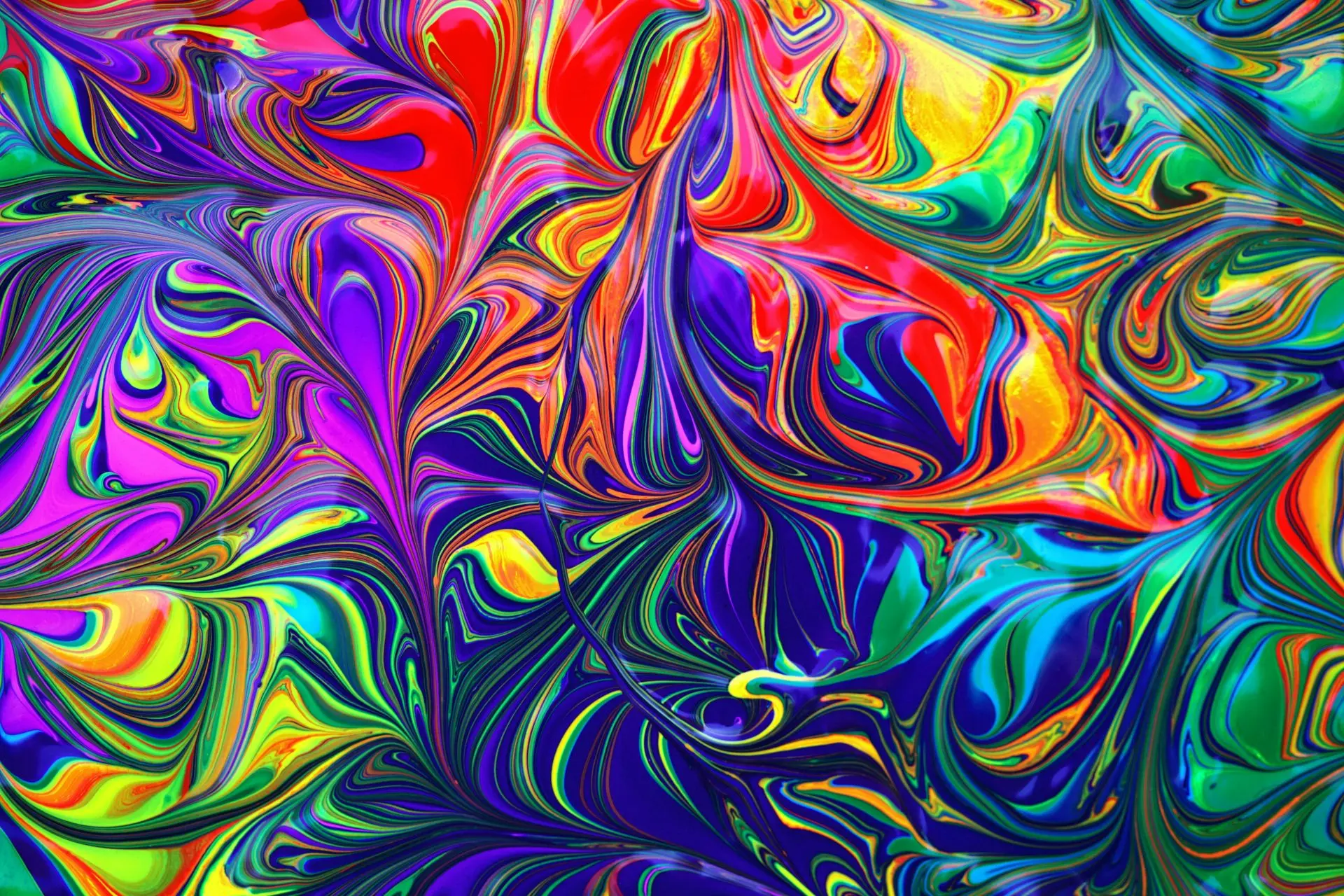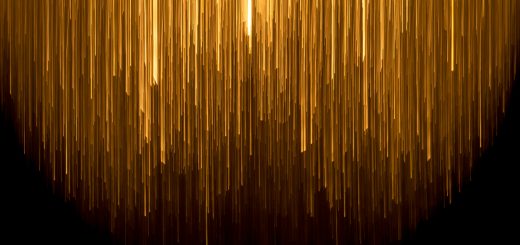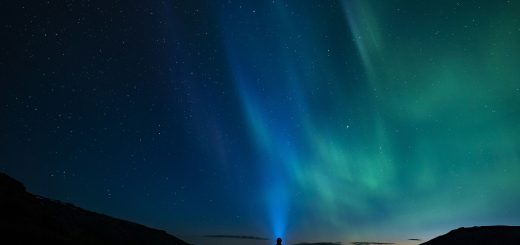The Kraken: Sea Monsters from Norse and Greek Myth

Looking for more amazing products? Check out our online store and explore our collection here! Happy shopping!
Before diving in, please note: This post is for informational purposes only. If you’d like to know more about how we approach topics, feel free to check out our friendly Disclaimer Page.
Hey there, amazing readers! 
We’re committed to delivering quality posts, and your support (even just sticking around despite the ads) means everything to us. So, bear with us, and thanks for helping us keep the good vibes rolling. Now, on to the fun stuff!
TRANSLATE BUTTON AT THE END OF THE ARTICLE
A Quick Overview
The ocean has always been a source of mystery, wonder, and fear.
Tales of monstrous creatures lurking beneath the waves have captivated humanity for centuries.
From the terrifying Kraken of Norse legend to the fearsome sea monsters of Greek mythology, these mythical beings remind us of the ocean’s vastness and unpredictability.
This article dives deep into these legendary sea monsters, exploring their origins, characteristics, and how they continue to influence our culture today.
Introduction: Unraveling the Mysteries of Sea Monsters
Ah, sea monsters!
Just the thought conjures up images of swirling waters and ghastly creatures ready to drag unwitting sailors into the depths of the ocean.
Many of us have peered over the edge of a boat, imagining what lurks beneath.
It’s a romantic notion, isn’t it?
The idea that some titanic beast might be swimming just out of sight, watching, waiting, and perhaps even longing to be discovered.
Sea monsters have been part of folklore across various cultures.
They often symbolize our fears of the unknown and the untamed nature of the sea.
Have you ever noticed how sea monsters often reflect societal anxieties?
In times of exploration, they represented the fear of the uncharted.
Today, they can signify environmental concerns about our oceans.
The Kraken and its Greek counterparts are fascinating subjects.
They embody our deepest fears while also sparking our imagination.
Their stories have been told and retold through generations.
Let’s embark on this journey to understand the Kraken alongside the rich tapestry of Greek sea monsters.
Buckle up as we delve into their myths and meanings!
The Kraken: A Legendary Beast of the Deep Seas
The Kraken, often depicted as a colossal squid or octopus, hails from Scandinavian folklore.
Legends describe it as a giant creature capable of dragging entire ships under the waves with its massive tentacles.
Imagine being on a ship, the sun setting, and suddenly the water starts to churn.
That’s the Kraken making its entrance!
This beast was said to inhabit the waters off Norway and Greenland.
Sailors spoke of its enormous size—some tales claim it could reach lengths of 1,000 feet!
It was often blamed for unexplained shipwrecks and disappearances.
The Kraken didn’t just represent terror; it also symbolized the might of nature, reminding us of our vulnerability on the open sea.
In various adaptations, the Kraken has taken on different forms.
Some artists portray it with numerous tentacles, while others imagine it with a more whale-like body.
Regardless of its depiction, it remains a testament to the imagination of sailors and the power of folklore.
The Kraken has transcended its origins, becoming a universally recognized symbol of the mysterious and the unknown.
Origins of the Kraken in Norse Mythology Explored
The roots of the Kraken can be traced back to Norse mythology, where it appears in various sagas and tales.
Norse sailors would often tell stories of a great beast that wreaked havoc on their voyages.
These legends were likely fueled by the actual sightings of giant squids and octopuses in the icy waters of the North Atlantic.
Notably, the Kraken is often associated with the "Sjöorm" or sea serpent.
In Norse stories, these serpents were also believed to inhabit the depths and wreak havoc.
This blending of different sea creatures into one mythic beast likely speaks to the fear and fascination of sailors navigating treacherous waters.
As Christianity spread through Scandinavia, the Kraken’s role in folklore evolved.
It went from a creature of nature to a symbol of chaos, embodying the primal fears of a world dominated by the sea.
This transformation illustrates how cultures adapt their myths over time, embedding new meanings into ancient stories.
The Kraken’s depiction in literature emerged in the 18th century when books began to describe it in more detail.
The beast was characterized by its monstrous size and immense strength.
The shift from oral tales to written narratives allowed for a wider audience to engage with the legend, ensuring its place in maritime lore.
Greek Sea Monsters: A Dive into Ancient Stories
While the Kraken looms large in Norse lore, the Greeks had their own fascinating array of sea monsters.
One of the most infamous is the legendary Scylla, a multi-headed creature that terrorized sailors navigating the strait between Sicily and the Italian mainland.
Imagine sailing through those waters, hearing the eerie howls of Scylla as it emerged from the depths!
Mythology recounts how Scylla was transformed into a monster due to the jealousy of a sea goddess.
Instead of being a mere beast, Scylla represents the consequences of human emotions and divine interventions.
Her story reminds us of the intertwining of fate, love, and wrath in ancient myths.
Another notorious Greek sea monster is Charybdis, a monstrous whirlpool that would swallow ships whole.
Together, Scylla and Charybdis formed a perilous choice for sailors: navigate close to the monstrous heads or risk being sucked into the abyss.
This duality reflects the dangers of decision-making in life—a common theme in many myths.
The Greeks also spoke of the Nemean Lion, not a sea creature but a beast of lore that parallels the essence of terror present in many monster stories.
Each of these monsters serves as a metaphor for humanity’s struggles against the uncontrollable forces of nature.
In exploring these stories, we find that both the Norse and Greek myths depict sea monsters as embodiments of fear, chaos, and the unknown.
They serve as warnings and moral lessons, reminding us of the delicate balance between humanity and nature.
Comparing the Kraken with Greek Sea Creatures
Now that we’ve met the Kraken and its Greek counterparts, let’s compare them.
At first glance, the Kraken and creatures like Scylla and Charybdis seem to inhabit different worlds.
The Kraken, with its tentacles, symbolizes the unpredictable nature of the sea, while Scylla’s heads represent the multifaceted dangers sailors faced.
Both mythologies present these monsters as formidable adversaries.
They evoke similar emotions of dread and awe.
Yet, the Kraken is often portrayed as more of a solitary creature, while Scylla and Charybdis represent the chaotic interplay of multiple dangers.
Additionally, the Kraken’s role in Norse mythology often leans towards misunderstanding; sailors’ fears stemming from the unknown depths reflect their ignorance of the vast ocean.
In contrast, Greek myths are more about the personal dramas between gods and monsters, often highlighting themes of fate, revenge, and moral choices.
The Kraken’s influence grew over time, becoming a catch-all for the fear of the unknown at sea.
Greek monsters, on the other hand, were more about the consequences of human actions.
Both, however, engage with humanity’s eternal struggle against nature, making them equally compelling.
This comparison shows us how different cultures have crafted their monsters from the same basic fears, illustrating the universality of these themes across time and space.
How the Kraken Became a Symbol of Fear and Wonder
The Kraken’s transformation into a symbol of fear and wonder can be traced through its many portrayals in literature and art.
Initially, it represented the terror of the seas—an embodiment of sailors’ nightmares.
But over time, it evolved into a more complex symbol.
One reason for this shift is the romanticism of the sea that emerged during the Age of Exploration.
As sailors returned with stories of strange creatures, the Kraken became a metaphor for the great unknown.
Suddenly, it wasn’t just about fear; it was about adventure and discovery.
In literature, the Kraken has also been depicted as a misunderstood creature.
Authors began to explore its story with empathy.
What if the Kraken was simply misunderstood?
This notion adds layers to its character—transforming it from a mere monster into a creature with a story.
Even in modern retellings, the Kraken transcends its terrifying origins.
Films, books, and games often showcase it as a majestic, albeit dangerous, entity.
The beauty of its massive form juxtaposed with the ferocity of its power evokes a sense of wonder.
This duality makes it an enticing subject for creators.
The Kraken’s evolution reflects our changing perceptions of nature.
The monster becomes a reminder of the beauty and terror that lies within the great unknown.
It embodies our fascination with the sea, reminding us that exploration holds both peril and promise.
Depictions of the Kraken in Art and Literature
Art and literature have played significant roles in shaping the Kraken’s identity.
From ancient woodcuts to modern cinematic portrayals, artists have used the Kraken to symbolize humanity’s relationship with the sea.
One of the earliest depictions of the Kraken can be found in Francesco Negri’s 1700s travelogue, where he described a giant squid attacking a ship.
This account caught the imagination of many, leading to more artistic representations.
As we move through time, the Kraken appears in various forms.
Romantic artists portrayed it as a tragic figure, often emphasizing the melancholic beauty of the deep.
Writers like Alfred Lord Tennyson captured the creature’s essence with poetic flair, highlighting its majesty and terror.
In contemporary culture, the Kraken has made its mark in movies, most notably in the "Pirates of the Caribbean" franchise.
Here, it is depicted as an awe-inspiring creature, beautifully animated yet terrifying in its power.
These modern interpretations have cemented the Kraken’s status as an icon of the sea.
Through these artistic expressions, the Kraken becomes more than just a monster; it evolves into a metaphor for our fears and aspirations related to the ocean.
It bridges the gap between ancient myth and modern storytelling, captivating audiences across generations.
Tales of Heroic Encounters with Sea Monsters
Stories of heroic encounters with sea monsters adorn both Norse and Greek tales.
These legends often feature brave sailors or demigods confronting the beasts, showcasing human courage against the formidable forces of the deep.
In Norse mythology, sagas often tell of heroes who faced the Kraken.
One such tale involves a brave Viking who, armed with nothing but his wits and a sturdy ship, challenged the beast.
His story becomes a testament to human resilience in the face of nature’s fury.
Greek mythology offers equally thrilling accounts.
Odysseus’s journey features encounters with Scylla and Charybdis as he navigates treacherous waters.
His cleverness and leadership become key to overcoming these monstrous challenges, illustrating the importance of intellect alongside physical strength.
These tales resonate with us because they reflect our struggles against the unknown.
Who hasn’t faced a personal “sea monster” in their life?
Whether it’s a daunting challenge or a significant life change, these stories remind us of our potential to conquer fear.
Moreover, these encounters reveal important themes about respect for nature.
The heroes don’t merely defeat the monsters; they learn and grow from their experiences.
This relationship with the sea reflects our ongoing journey of understanding and coexistence with the natural world.
The Science Behind Sea Monsters: Fact vs. Fiction
While sea monsters are fascinating mythical beings, some scientific truths underpin these legends.
Many creatures that inspired tales of monsters are very much real.
For example, giant squids do exist, capable of reaching lengths over 40 feet!
The unpredictability of the ocean contributes to the lore of sea monsters.
The vast, dark depths hide many mysteries, and human beings often fill that void with imagination.
Historical accounts of large marine animals, such as whales and the colossal squid, likely fueled the Kraken myth.
Ocean currents and unusual wave patterns can create optical illusions, making sailors perceive shadowy figures in the water.
These phenomena might have led to sightings of creatures that were then exaggerated in stories.
Scientists continue to discover new species in the ocean, adding to the allure of sea monsters.
Who knows what else lies beneath the surface?
The ocean is still largely uncharted territory.
This reality enhances the appeal of the Kraken and its kin—mysteries waiting to be solved.
Interestingly, the fascination with these creatures can inspire marine conservation efforts.
By celebrating the mystery of the ocean, we are reminded of our responsibility to protect it.
After all, every mythical sea monster has a basis in the natural world.
Modern Interpretations of the Kraken in Pop Culture
The Kraken has become a pop culture phenomenon, appearing in films, books, and video games.
Its legacy has evolved beyond the pages of mythology into a symbol of adventure, mystery, and even humor.
In movies, the Kraken is often portrayed with stunning visuals, showcasing its massive size and strength.
The creature serves as a dramatic element, bringing tension and excitement to the story.
However, the portrayal can vary widely—from a terrifying beast to a misunderstood creature of the sea.
In literature, the Kraken has inspired authors to explore themes of fear and discovery.
Books like "The Kraken" by China Miéville delve into complex narratives that challenge our perceptions of monsters.
These modern interpretations invite us to question our relationship with nature and the unknown.
Video games have also embraced the Kraken, featuring it as a formidable boss character.
Players must confront this legendary beast, adding excitement and challenge to their gaming experience.
The Kraken becomes a rite of passage for players, symbolizing the ultimate test of skill and bravery.
Even in merchandise, the Kraken has found its place in popular culture.
From t-shirts to coffee mugs, its image captivates fans of all ages.
The fascination with this legendary creature continues to thrive as new generations discover its story.
Through these varied interpretations, the Kraken remains a dynamic figure within our collective imagination.
It embodies the thrill of the unknown, ensuring that its legend endures in the hearts of many.
The Kraken’s Role in Maritime History and Folklore
The Kraken and other sea monsters have woven themselves into the tapestry of maritime history.
Sailors often shared tales of encounters with these creatures, creating a rich folklore that contributed to the identity of seafaring communities.
Throughout history, the Kraken has served as a cautionary tale.
Sailors would recount stories of those who dared to challenge the sea’s monsters and paid the price.
These narratives acted as warnings for future generations, embedding respect for the ocean into the maritime culture.
In many ways, these stories also fostered camaraderie among sailors.
Sharing tales of monstrous encounters became a rite of passage, creating bonds and traditions within crews.
The Kraken represented not just fear but also the shared experience of navigating the unpredictable seas.
As exploration grew, so did the stories of sea monsters.
The age of discovery brought back tales of strange creatures and extraordinary encounters.
This fascination was not unique to Norse or Greek cultures; various civilizations developed their myths about sea monsters, each reflecting their fears and experiences.
The myth of the Kraken also highlights humanity’s relationship with nature.
It symbolizes both the awe-inspiring beauty of the ocean and the peril that lies beneath its surface.
These stories remind us of our responsibility as stewards of the sea, encouraging conservation and respect for our marine environments.
Conclusion: Embracing the Enchantment of Sea Monsters
In exploring the Kraken and its kin, we discover a rich tapestry of myths and tales that reflect humanity’s relationship with the ocean.
From the terrifying depths to the heroic encounters, sea monsters continue to captivate our imaginations.
Whether through Norse legends or Greek tales, these creatures remind us of the mysteries that lie beyond our reach.
They symbolize our fears, aspirations, and the eternal allure of the unknown.
The Kraken serves as a reminder that while the ocean can be a place of danger, it is also a source of beauty and wonder.
As we navigate our own lives, we often face our “sea monsters,” challenges that demand courage and ingenuity.
So, the next time you gaze out over the ocean, remember the stories of the Kraken and its companions.
Embrace the enchantment of sea monsters, for they are not just figments of our imagination; they are reflections of our deepest fears and our most profound aspirations.
The sea, with all its mysteries, will always hold a special place in our hearts and stories.

The Enlightenment Journey is a remarkable collection of writings authored by a distinguished group of experts in the fields of spirituality, new age, and esoteric knowledge.
This anthology features a diverse assembly of well-experienced authors who bring their profound insights and credible perspectives to the forefront.
Each contributor possesses a wealth of knowledge and wisdom, making them authorities in their respective domains.
Together, they offer readers a transformative journey into the realms of spiritual growth, self-discovery, and esoteric enlightenment.
The Enlightenment Journey is a testament to the collective expertise of these luminaries, providing readers with a rich tapestry of ideas and information to illuminate their spiritual path.
Our Diverse Expertise
While our primary focus is on spirituality and esotericism, we are equally passionate about exploring a wide range of other topics and niches 

To ensure we provide the most accurate and valuable insights, we collaborate with trusted experts in their respective domains 
Our blog originally focused on spirituality and metaphysics, but we’ve since expanded to cover a wide range of niches. Don’t worry—we continue to publish a lot of articles on spirituality! Frequently visit our blog to explore our diverse content and stay tuned for more insightful reads.
Hey there, amazing reader! 
Check out our store here and take a peek at some of our featured products below! Thanks for being awesome!













